Understanding the carbon footprint of products has never been more critical. In countries across the globe, it's a reporting requirement; for others, it's a baseline metric to understand emissions. For companies embracing sustainable practices, ISO 14067 offers a comprehensive framework for quantifying and communicating their CFPs.
But what exactly is ISO 14067, and how can it benefit your company? Let's explore the intricacies of this International Standard and its significance for sustainability efforts.
What is ISO 14067?
ISO 14067 – Greenhouse Gases – Carbon Footprint of Products is an International Standard that outlines principles, requirements, and guidelines for quantifying and communicating the carbon footprint of products (CFPs), including goods and services, based on their greenhouse gas (GHG) emissions and removals throughout their life cycle. It also provides guidelines for partial CFPs. The communication of CFPs must be accurate, relevant, and fair, ensuring transparency and accountability.
Carbon Footprint of Products (CFPs)
A carbon footprint of products (CFP) represents the total amount of GHG emissions and removals associated with a product throughout its life cycle, from raw material acquisition to production, distribution, use, and end-of-life disposal. Understanding and quantifying CFPs is crucial for companies striving to minimize their environmental impact and make informed decisions about sustainability.
When an organization decides to make a CFP communication publicly available, there are two options to conform with this International Standard. CFP communication intended to be available to the public shall:
Independent Third-Party Verification
This involves an external, impartial review of the CFP study to confirm its accuracy and compliance with ISO 14067. Organizations like SGS can audit and verify ISO 14067 products.
CFP Disclosure Report
If third-party verification is not pursued, companies must prepare a comprehensive CFP disclosure report that accurately represents the CFP study's findings without bias. It is crucial to ensure the report is complete and accurately communicated to the intended audience. This communication must not imply third-party verification if it has not been verified.
CFP Study Report
When a CFP claim, CFP label, or CFP declaration is intended to be available to the public, CFP-PCR shall be used. If relevant CFP-PCR exists, they shall be adopted. If no relevant CFP-PCR exists, CFP-PCR shall be established based on the ISO guidelines provided.
Life Cycle Assessment (LCA) phases for ISO 14067
ISO 14067 requires a comprehensive Life Cycle Assessment (LCA) to quantify the CFPs accurately. An LCA involves four key phases:
- Goal and Scope Definition: This phase establishes the study's objectives and boundaries, including the product system, functional unit, and specific GHGs to be assessed.
- Life Cycle Inventory (LCI): In this phase, data is collected on all relevant inputs (e.g., energy, materials) and outputs (e.g., emissions, waste) associated with the product system throughout its life cycle.
- Life Cycle Impact Assessment (LCIA): This phase evaluates the potential environmental impacts of the product system based on the LCI data, focusing on GHG emissions and removals.
- Life Cycle Interpretation: The final phase involves analyzing the LCI and LCIA results to draw conclusions, identify areas for improvement, and communicate the findings.
How do you get an ISO 14067 verification?
Obtaining ISO 14067 verification involves a rigorous process to ensure that the CFP quantification and communication comply with the standard's requirements. Companies have two options for public CFP communication:
- Independent Third-Party Verification: This involves an external, impartial review of the CFP study to confirm its accuracy and compliance with ISO 14067. Organizations such as SGS can audit and verify ISO 14067 products.
- CFP Disclosure Report: If third-party verification is not pursued, companies must prepare a comprehensive CFP disclosure report that accurately represents the CFP study's findings without bias.
It is essential to note that carbon offsetting is not allowed in quantifying CFPs or partial CFPs, as it falls outside the scope of this standard.
Benefits of ISO 14067 for your company
Companies obtaining ISO 14067 certification experience numerous advantages that extend beyond mere compliance. Here are some key benefits:
1. Enhanced Stakeholder Relationships
Transparent reporting of greenhouse gas emissions throughout a product's lifecycle garners stakeholders' trust. This transparency encourages stakeholders to engage more deeply with the company's sustainability mission.
2. Increased Market Appeal
By clearly identifying products with lower carbon footprints, companies can attract environmentally-conscious customers, expanding their market reach and contributing to higher sales.
3. Sustainability Leadership
Holding an ISO 14067 certification places a company at the forefront of sustainability efforts, promoting industry-wide emission reductions. This leadership role can inspire both public and private sectors to adopt similar practices.
4. Operational Efficiency
Through the rigorous evaluation required for the certification, companies can uncover inefficiencies and areas of waste. This can lead to significant cost savings and more streamlined operations.
5. Risk Management
A transparent understanding of greenhouse gas emissions helps companies better manage environmental risks. This can enhance the company's reputation and reliability, further solidifying stakeholder confidence.
6. Enhanced ESG Values
Adherence to ISO 14067 promotes the company's Environmental, Social, and Governance (ESG) values. Highlighting sustainable practices can boost the company’s image and align with global sustainability goals.
7. Support for Other Certifications
Obtaining ISO 14067 can serve as a foundation for achieving other ISO standards, creating a comprehensive management system that enhances overall organizational efficiency.
8.Continuous Improvement
The certification process sheds light on potential areas for environmental improvements, paving the way for setting and achieving more ambitious sustainability targets.
Steps to Apply for ISO 14067 Certification
Obtaining ISO 14067 certification, which focuses on the greenhouse gas emissions of products, involves several meticulous steps. Here’s a streamlined guide to help your company navigate the process:
1. Preliminary Preparation
Begin by gathering all relevant documentation related to your product's greenhouse gas emissions. This foundational step ensures you have a comprehensive baseline of your current sustainability measures.
2. Decide on Third-Party Assistance
Many companies choose to consult a third-party service to ease the process. Arbor can help quantify the emissions and prepare a verified proposal to a verification agency. While not mandatory, these experts can help manage the paperwork and streamline the entire application.
Tip: Even if you engage a third party, it's beneficial to have your preliminary documentation organized. This provides a clear starting point for both your internal team and external consultants.
3. Documentation Submission
Submit your preliminary documentation to the third party for review. They will assess whether your paperwork meets the ISO 14067 requirements.
- Internal Review: Conduct an in-house audit of your gathered documents.
- Consultant Review: If using a third party, send your documentation to them for verification.
4. Verification Process
The third party will verify your documentation to ensure it is sufficient for the ISO 14067 certification.
- Sufficient Documentation: If your papers are in order, the third party will proceed with the submission.
- Insufficient Documentation: If there are gaps, they will guide you on what additional information is needed.
5. Certification
Once your documentation is verified as sufficient, the third party will process your application and award the ISO 14067 certification.
Renewal: Keep in mind, ISO 14067 certification is not permanent. Plan for future renewals by maintaining accurate and updated records.
Key Takeaways
- Initial Gatherings: Collect all emission-related documents.
- Third-Party Assistance: Optional but beneficial for smoother processing.
- Verification: Ensure all documentation meets ISO standards.
- Certification and Renewal: Obtain and plan for regular renewals.
By following these structured steps, your company can efficiently secure ISO 14067 certification, demonstrating a commitment to sustainability and reducing greenhouse gas emissions.
How Companies Can Ensure Transparency and Reduce Their Carbon Footprint
Enhanced Transparency Practices
- Detailed Carbon Footprint Reporting: Implementing thorough carbon footprint assessments for products and services is crucial. Detailed reporting allows stakeholders to see the precise impact of company operations on the environment.
- Public Disclosure: Regularly publish carbon footprint reports to maintain transparency. This transparency fosters trust among stakeholders including customers, investors, and regulators.
Competitive Advantage Strategies
- Sustainability Certifications: Obtain certifications such as ISO 14067 to showcase commitment to reducing carbon emissions. These certifications signal to the market that a company is serious about sustainability.
- Eco-Friendly Innovations: Invest in innovative, eco-friendly technologies and practices, giving the company a competitive edge in a market increasingly concerned with environmental impact.
Compliance and Regulatory Practices
- Stay Ahead of Regulations: Keep abreast of existing and upcoming regulations related to carbon emissions. Proactively adopting standards like ISO 14067 ensures compliance and positions the company as a leader in environmental stewardship.
- Internal Audits: Conduct regular internal audits to ensure ongoing compliance with environmental regulations and standards. This practice helps in identifying areas of improvement and maintaining regulatory alignment.
Cost-Saving Initiatives
- Resource Optimization: Identify and manage high carbon hotspots within operations. Efficient use of resources such as energy and raw materials can lead to significant cost savings.
- Waste Reduction Programs: Implement programs aimed at reducing waste and recycling materials, thereby lowering overall carbon footprints and cutting operational costs.
Stakeholder Relationship Management
- Engage with Stakeholders: Foster open communication with stakeholders about sustainability efforts. Engaging with customers, investors, and partners about carbon reduction initiatives can strengthen relationships.
- Sustainability Reporting: Create comprehensive sustainability reports that provide insights into carbon reduction progress. These reports can enhance stakeholder confidence and engagement.
Risk Management Techniques
- Carbon Footprint Analysis: Perform regular carbon footprint analyses to anticipate and mitigate risks associated with climate change and resource scarcity.
- Scenario Planning: Develop scenario plans for various climate-related risks. This proactive approach helps in preparing for potential disruptions and maintaining business continuity.
Exploring New Market Opportunities
- Eco-Certification Adherence: Adhere to eco-certifications to unlock new market opportunities in regions and industries that prioritize low-carbon products.
- Sustainable Product Development: Develop and market products that emphasize sustainability. This can attract environmentally conscious consumers and open up new revenue streams.
By adopting these practices, companies can ensure transparency and effectively reduce their carbon footprint, positioning themselves as leaders in sustainability and responsible business practices.
About the International Standards Organization (ISO)
The International Standards Organization (ISO) is an independent, non-governmental international organization that develops and publishes standards to ensure quality, safety, efficiency, and interoperability across various industries. Established in 1947, ISO has been instrumental in fostering global trade and innovation through standardization. ISO 14067 is one of the many standards developed by ISO to address environmental sustainability and help companies reduce their GHG emissions.
Summary
ISO 14067 serves as a vital tool for companies committed to understanding and reducing their carbon footprints. By adhering to this International Standard, your company can enhance its credibility, improve environmental performance, gain a competitive edge, ensure regulatory compliance, and achieve cost savings. The sustainability journey is complex, but ISO 14067 offers a clear, structured path to quantifying and communicating the carbon footprint of your products.
If your company is ready to take the next step towards sustainability, consider exploring how Arbor can help you navigate this process. Talk to sales today to learn more about our carbon accounting solutions and how we can support your journey to a greener future.
Measure your carbon emissions with Arbor
Simple, easy carbon accounting.

FAQ about ISO 14067:
What is the ISO standard for carbon accounting?
ISO 14067 is the international standard that specifies principles and requirements for quantifying and reporting the carbon footprint of products. It provides a comprehensive methodology to assess the greenhouse gas (GHG) emissions throughout a product's lifecycle, from raw material extraction to disposal.
What is the ISO standard for GHG?
The ISO 14064 series is the standard for greenhouse gas (GHG) accounting and verification. It includes guidelines for quantifying, monitoring, reporting, and validating GHG emissions. ISO 14064-1 focuses on organizational-level GHG emissions, while ISO 14064-2 and ISO 14064-3 deal with project-level GHG emissions and verification, respectively.
Is ISO 14067 verification necessary?
While ISO 14067 verification is not mandatory, it is beneficial for ensuring the accuracy and credibility of a product's carbon footprint data. Verification by an independent third party can enhance the transparency and reliability of the carbon footprint assessment, providing stakeholders with confidence in the data reported.
Why Might an ISO 14067 Certification Be Indispensable for a Company?
Achieving an ISO 14067 certification can be a game-changer for companies aiming to stand out in today’s environmentally conscious market. This certification demonstrates a firm commitment to sustainability, which several stakeholders value highly.
Improved Customer Perception
Consumers today are increasingly environmentally aware. While they might not directly think about the intricacies of a company’s Quality or Environmental Management Systems when buying products like face wash or candles, they do appreciate transparency and sustainable practices. Initiatives such as refill programs for cosmetic containers at a discount can enhance brand loyalty and customer satisfaction. These programs underscore a company's efforts to reduce its carbon footprint and can only be strengthened by ISO 14067 certification.
Key Benefits of ISO 14067 Certification
- Transparency in Manufacturing: An ISO 14067 certification ensures that companies adhere to rigorous environmental standards. This includes:
- Raw material acquisition from sustainable sources.
- Continuous improvement in life cycle assessments (LCA) to reduce environmental impacts.
- Measures to protect human health and mitigate greenhouse gas emissions.
- Energy Efficiency: Companies with this certification can demonstrate significant reductions in energy consumption, showcasing their genuine efforts to practice sustainability.
- Verifiable Claims: The certification relies on the best available scientific knowledge to verify environmental claims, avoiding the pitfalls of false environmental labels.
- Climate Change Initiatives: ISO 14067 certified companies address climate change with targeted local and global initiatives, contributing to both business profitability and human well-being.
Enhancing Business Credentials
Beyond operational improvements, an ISO 14067 certification signals to investors that a company is forward-thinking and responsible. This certification can attract greater interest from investors looking to support sustainable ventures, thereby potentially increasing the investment inflow and financial health of the company.
Competitive Advantage
In the broader business context, collecting multiple ISO certifications can position a company as a sustainability leader in its industry. Having ISO 14067 in the mix is essential for any company serious about its long-term impact and reputation. It’s like enhancing a recipe with key ingredients—the end result is a "product" that appeals to both consumers and investors alike.
In conclusion, obtaining an ISO 14067 certification is more than just a regulatory checkbox; it’s a strategic move that can propel a company into higher realms of market credibility, investor interest, and sustainable success.
How Can Adhering to ISO 14067 Open Up New Market Opportunities?
Complying with ISO 14067 can significantly expand a company's reach into untapped markets. This international standard focuses on quantifying and reducing the carbon footprint of products, a factor that is increasingly pivotal in today's environmentally conscious landscape.
- Appeal to Eco-Conscious Consumers: Modern consumers are more discerning about the environmental impact of the products they buy. By demonstrating a commitment to sustainability through ISO 14067, businesses can attract this growing demographic.
- Gain a Competitive Edge: Many industries are becoming more stringent about their environmental standards. Companies that align with ISO 14067 can stand out from competitors, especially in sectors where sustainability is a key differentiator.
- Capture New Geographies: Different regions around the world, particularly in Europe and parts of North America, are enacting tougher environmental regulations. Compliance with ISO 14067 can facilitate easier entry into these markets, providing a smoother regulatory path.
- Form Strategic Partnerships: Large corporations and government bodies increasingly prefer to work with suppliers and partners who meet high environmental standards. ISO 14067 certification can open doors to collaborations that were previously inaccessible.
- Meet Industry Requirements: Specific industries, like automotive and electronics, are integrating low-carbon products into their supply chains. Adhering to ISO 14067 can help companies qualify as suppliers to these industries, broadening their market reach.
In essence, ISO 14067 is more than just a compliance measure; it's a strategic tool for market expansion and differentiation.
How Does ISO 14067 Enhance Transparency for Companies?
ISO 14067 plays a crucial role in enhancing transparency for companies by providing a structured framework for assessing the carbon footprint of their products. This standard offers several key benefits in terms of transparency:
- Clear Carbon Footprint Reporting: ISO 14067 standardizes the method for calculating and reporting the carbon footprint of products. By following a consistent method, companies can present precise and comparable data, making it easier for stakeholders to understand and trust the information.
- Improved Stakeholder Trust: When companies adopt ISO 14067, they demonstrate a commitment to environmental accountability. This transparency fosters greater trust among consumers, investors, and other stakeholders, who can rely on the standardized data to make informed decisions.
- Compliance and Verification: Adhering to ISO 14067 allows companies to comply with global environmental standards, which can be verified by third parties. Independent verification ensures that the reported data is accurate and reliable, further enhancing credibility and trustworthiness.
- Competitive Advantage: By transparently reporting their carbon footprint based on ISO 14067, companies can differentiate themselves in the market. Consumers increasingly prefer products from environmentally responsible companies, and this transparency can attract eco-conscious customers and partners.
- Regulatory Alignment: ISO 14067 helps companies align with international regulations and standards related to environmental reporting. This alignment facilitates smoother operations across different regions and reduces the risk of non-compliance penalties.
Ultimately, ISO 14067 enables companies to communicate their environmental impact effectively, fostering an environment of trust and accountability. By adopting this standard, businesses can build stronger relationships with their stakeholders and enhance their overall market reputation.
How Can a Company Receive ISO 14067 Certification?
Securing ISO 14067 certification can seem daunting, but it’s manageable with a clear strategy. Here’s a detailed guide to help your company navigate the process.
1. Understand ISO 14067 Requirements
First, familiarize yourself with the ISO 14067 standards. This will give you a clear idea of the guidelines and the carbon footprint assessment methodologies you need to follow.
2. Prepare Documentation
Regardless of whether you hire a third party, gather all necessary documentation, such as:
- Emission data: Detailed records of your company's greenhouse gas emissions.
- Processes and practices: Documentation about how your company operates.
This documentation will serve as a foundation for the certification process.
3. Decide on Third-Party Assistance
You have two main options:
- In-House Management: Handle the entire process internally.
- Third-Party Assistance: Hire a certified third-party organization specializing in ISO certifications.
Pros of Hiring a Third Party:
- Expertise: They can simplify the process by handling the intricate details.
- Efficiency: Speeds up the certification process by ensuring all paperwork is correctly completed.
4. Submit Documentation
If you opt for third-party help, submit your preliminary documentation for their review. They'll verify if your papers meet the ISO 14067 standards.
5. Verification and Adjustments
The third party will assess your documentation:
- Verification: They check if your documents are sufficient.
- Adjustments: If needed, they suggest improvements to align with ISO standards.
6. Obtain Certification
Once your documentation meets the standards:
- Submission: Your third party will forward the papers to the certification body.
- Certification: Upon approval, your company receives the ISO 14067 certification, valid for a specified period.
7. Renewal
ISO 14067 certification typically needs renewal. Stay prepared with updated documentation to facilitate the renewal process.
By following these steps, your company can systematically achieve ISO 14067 certification, demonstrating your commitment to reducing carbon footprints and enhancing sustainability.
What is the difference between ISO 14064 and 14067?
ISO 14064 focuses on the broader aspects of GHG emissions, including organizational and project-level emissions. In contrast, ISO 14067 specifically addresses the carbon footprint of products, providing detailed guidelines on quantifying and reporting emissions throughout a product's lifecycle.
What is the difference between ISO 14064 and other ISO certifications?
ISO 14064 is distinct from other ISO certifications as it is dedicated to GHG emissions. Other ISO certifications, such as ISO 9001 (quality management) and ISO 14001 (environmental management), focus on different aspects of organizational performance. ISO 14064 integrates with these systems but specifically targets GHG accounting and verification.
What is the difference between ISO 14067 and GHG protocol?
ISO 14067 and the GHG Protocol both provide frameworks for calculating and reporting GHG emissions. However, ISO 14067 is specifically tailored to the carbon footprint of products, whereas the GHG Protocol offers broader guidelines for corporate GHG accounting and reporting. The GHG Protocol is widely used globally, while ISO 14067 provides more detailed product-level assessment.
Is Acquiring an ISO 14067 Certification Worth It for a Company?
When considering the value of an ISO 14067 certification, it's essential to weigh both the challenges and the long-term benefits. Achieving this certification can be complex and time-consuming, but it offers substantial advantages that can substantially enhance a company's market position.
Consumer Perception and Trust
Modern consumers are becoming increasingly conscious of the environmental impacts of their purchases. While they might not explicitly think about a company's Quality or Environmental Management Systems, they are drawn to brands that display clear, transparent sustainability efforts. For instance, the practice of offering product refills at a discount not only appeals to eco-conscious customers but also fosters trust and satisfaction. By showcasing a commitment to reducing carbon footprints, companies can enhance their reputation and build a loyal customer base.
Concrete Environmental Benefits
An ISO 14067 certification underscores a company’s dedication to minimizing its environmental impact. This is achieved by:
- Raw Material Sourcing: Prioritizing sustainable acquisition of materials.
- Lifecycle Assessments: Continuously improving the environmental impacts across a product's lifecycle.
- Health Protection: Implementing measures to safeguard human health.
- Emission Mitigation: Actively reducing greenhouse gas emissions.
- Accurate Labeling: Avoiding misleading environmental claims through verified information.
- Energy Efficiency: Cutting down on energy consumption.
- Scientific Validation: Using the best available scientific knowledge for verification processes.
- Targeted Measures: Addressing climate change through specific local initiatives.
These efforts not only prove to consumers that the company is genuinely committed to sustainability but also contribute significantly to environmental preservation.
Competitive Edge and Financial Benefits
Holding an ISO 14067 certification can differentiate a company in a crowded market. Potential investors are increasingly seeking companies with a robust commitment to sustainability, recognizing that such practices can lead to long-term financial stability and growth. For instance, companies with multiple ISO certifications often attract greater investor interest, as these certifications can signal a higher likelihood of sustainable and profitable operations.
While obtaining an ISO 14067 certification involves a substantial investment of time and resources, the benefits it brings make it well worth the effort. By elevating consumer trust, tangibly reducing environmental impacts, and enhancing market competitiveness, this certification can play a crucial role in a company's long-term success and sustainability efforts.
How is ISO 14067 Different from Other ISO Certifications?
ISO 14067 stands out distinctly from other ISO certifications like ISO 5001, ISO 9001, and ISO 14001 primarily because it focuses specifically on products rather than entire management systems.
Product Focus vs. Management Systems
- ISO 14067: This certification zeroes in on the carbon footprint of products. It quantifies the greenhouse gas (GHG) emissions throughout the life cycle of a product, from raw material acquisition to disposal. This product-centric approach is unique in the ISO series.
- ISO 5001: This standard is all about energy management systems (EnMS). It helps organizations improve their energy efficiency, reduce their energy consumption, and lessen their environmental impact through systematic energy management.
- ISO 9001: This certification centers on quality management systems (QMS). It ensures that organizations consistently meet customer and regulatory requirements, enhancing customer satisfaction through effective quality management practices.
- ISO 14001: This standard focuses on environmental management systems (EMS). It provides a framework for organizations to protect the environment and respond to changing environmental conditions in balance with socio-economic needs.
Key Comparisons
- Scope of Application:
- ISO 14067: Targets the carbon footprint of individual products.
- ISO 5001, ISO 9001, ISO 14001: Concerned with overarching management systems within organizations.
- Objectives:
- ISO 14067: Aims to measure and communicate the environmental impact of specific products through their life cycle.
- ISO 5001: Focuses on reducing energy use and improving energy efficiency.
- ISO 9001: Geared towards maintaining consistent quality and enhancing customer satisfaction.
- ISO 14001: Aims to reduce environmental impact and improve environmental performance.
Unified Goal, Different Paths
While each ISO certification serves its unique purpose, they all contribute to the overall improvement of organizational practices. They enable businesses to operate more efficiently, sustainably, and responsibly. Integrating these standards can provide a comprehensive approach to achieving business excellence and sustainability.
In summary, ISO 14067 is unique amongst ISO certifications because it is dedicated to assessing the carbon footprint of products, setting it apart from others that focus on broader management systems.
How can ISO 14067 certification attract more investors to a company?
Competitive Advantage: With growing consumer awareness and demand for sustainable products, having ISO 14067 certification can differentiate your company from competitors and attract environmentally conscious customers.
Moreover, ISO 14067 certification demonstrates your organization's commitment to aligning with consumer expectations for sustainability. This certification helps your company gain a comprehensive understanding of the carbon footprint of your products, even after they leave your control. By showcasing this level of responsibility and transparency, you can capture the interest of investors who prioritize environmental, social, and governance (ESG) criteria.
Innovative Emission Reduction: ISO 14067 not only helps you measure and manage emissions at your production site but also encourages you to find innovative ways to reduce emissions throughout the entire lifecycle of your products. This proactive approach to sustainability can make your company more appealing to forward-thinking investors looking for long-term, environmentally responsible investments.
Tackling Scope 3 Emissions: Importantly, ISO 14067 addresses scope 3 emissions, which are often the most challenging to manage and control. By taking on this complex aspect of carbon management, your company can illustrate its dedication to fighting climate change, further boosting investor confidence in your sustainability initiatives.
How to Gather Documentation for ISO 14067 Certification
Getting started with the ISO 14067 certification process involves careful preparation and documentation. Here's a step-by-step guide to help your company compile the necessary documentation.
- Identify Relevant Data Sources
Begin by determining all the areas within your company that generate data relevant to carbon footprint assessment. This typically includes:- Energy consumption records
- Fuel usage logs
- Suppliers' environmental reports
- Collect Historical Data
Gather historical data for a period that accurately reflects your company's operational practices. This might include:- Utility bills
- Procurement records
- Transportation logs
- Organize Documentation
Create a systematic approach to organizing your data. This can involve:- Establishing a digital storage system
- Categorizing documentation by type (e.g., energy, transportation, procurement)
- Ensuring files are easily accessible
- Verify Data Accuracy
Before submission, it's crucial to verify the accuracy of your data. This step includes:- Cross-referencing data with original sources
- Ensuring consistency across all documentation
- Correcting any anomalies
- Conduct Internal Audits
Perform internal audits to ensure all collected data meets the ISO 14067 requirements. This often involves:- Reviewing documentation with your internal team
- Identifying areas for improvement
- Preparing a summary report of your findings
- Prepare for Third-Party Verification
If you plan to utilize a third-party verification service:- Prepare a preliminary documentation package
- Ensure that all files are in order and easy to review
- Anticipate any additional information the verifier may request
Practical Tips for Easing the Process
- Use Templates: Standardized templates can ensure consistency in data collection and presentation.
- Document Everything: Keep thorough records of all steps taken in gathering and verifying data.
- Schedule Regular Reviews: Regularly review and update the documentation to maintain accuracy and relevance.
By following these steps and ensuring meticulous documentation, your company will be well-prepared for the ISO 14067 certification process.
How can you calculate the carbon footprint of your product?
Calculating the carbon footprint of a product involves assessing GHG emissions across its entire lifecycle. This includes emissions from raw material extraction, manufacturing, transportation, usage, and disposal. ISO 14067 provides detailed guidelines for this process, ensuring that all relevant emissions are accounted for and reported accurately.
What ISO is a carbon footprint?
ISO 14067 is the standard that specifically addresses the carbon footprint of products. It provides a framework for calculating, reporting, and verifying the GHG emissions associated with a product's lifecycle.
What is the main purpose of the ISO 14067 standard?
ISO 14067's main purpose is to provide a standardized methodology for quantifying products' carbon footprints. This helps organizations identify emissions hotspots, improve environmental performance, and communicate their sustainability efforts more transparently.
What is the ISO standard for sustainable procurement?
ISO 20400 is the international standard for sustainable procurement. It provides guidance on integrating sustainability into procurement processes, ensuring that organizations consider environmental, social, and economic impacts when making purchasing decisions.



.webp)
%20Directive.webp)
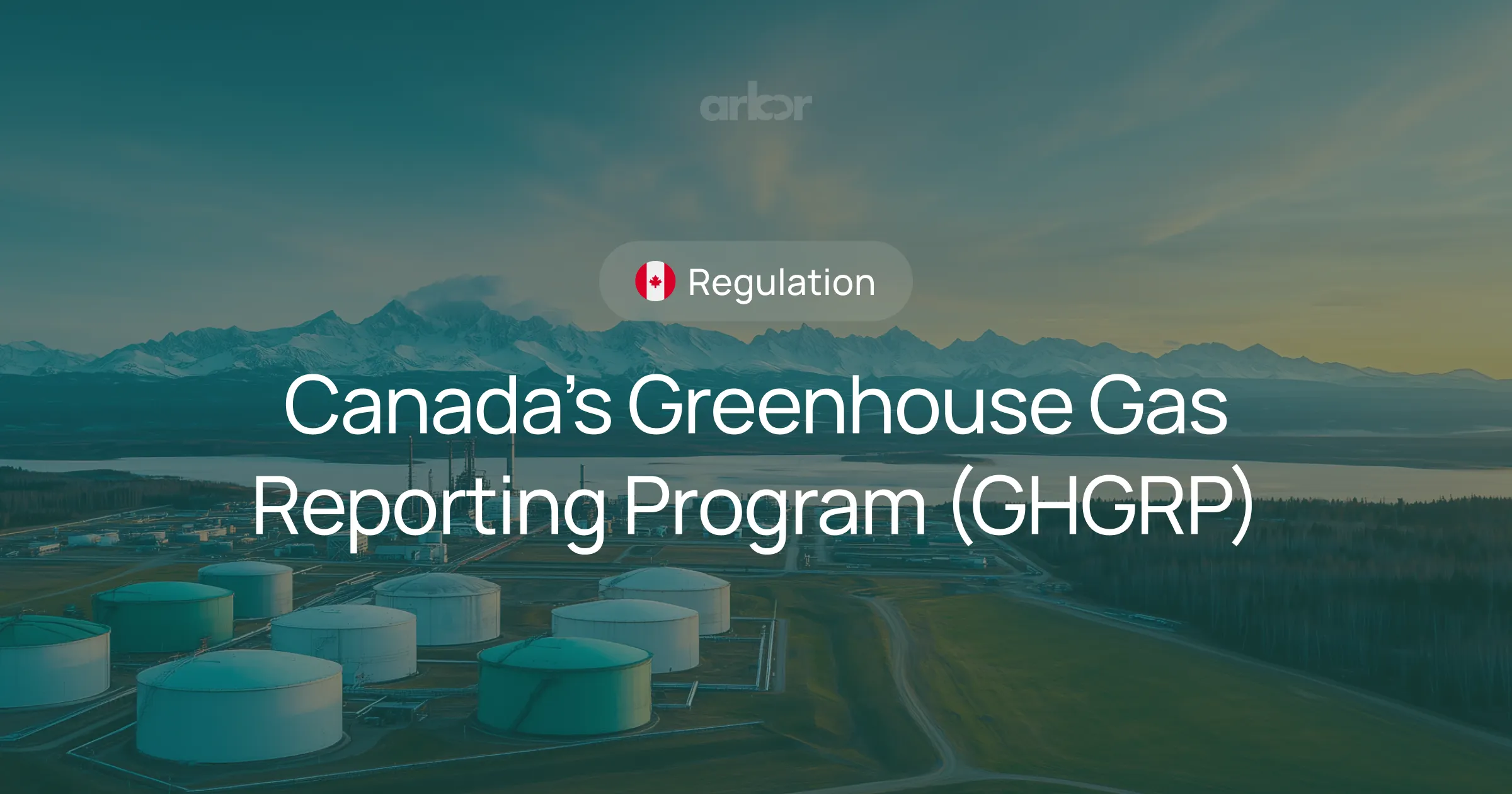

.webp)
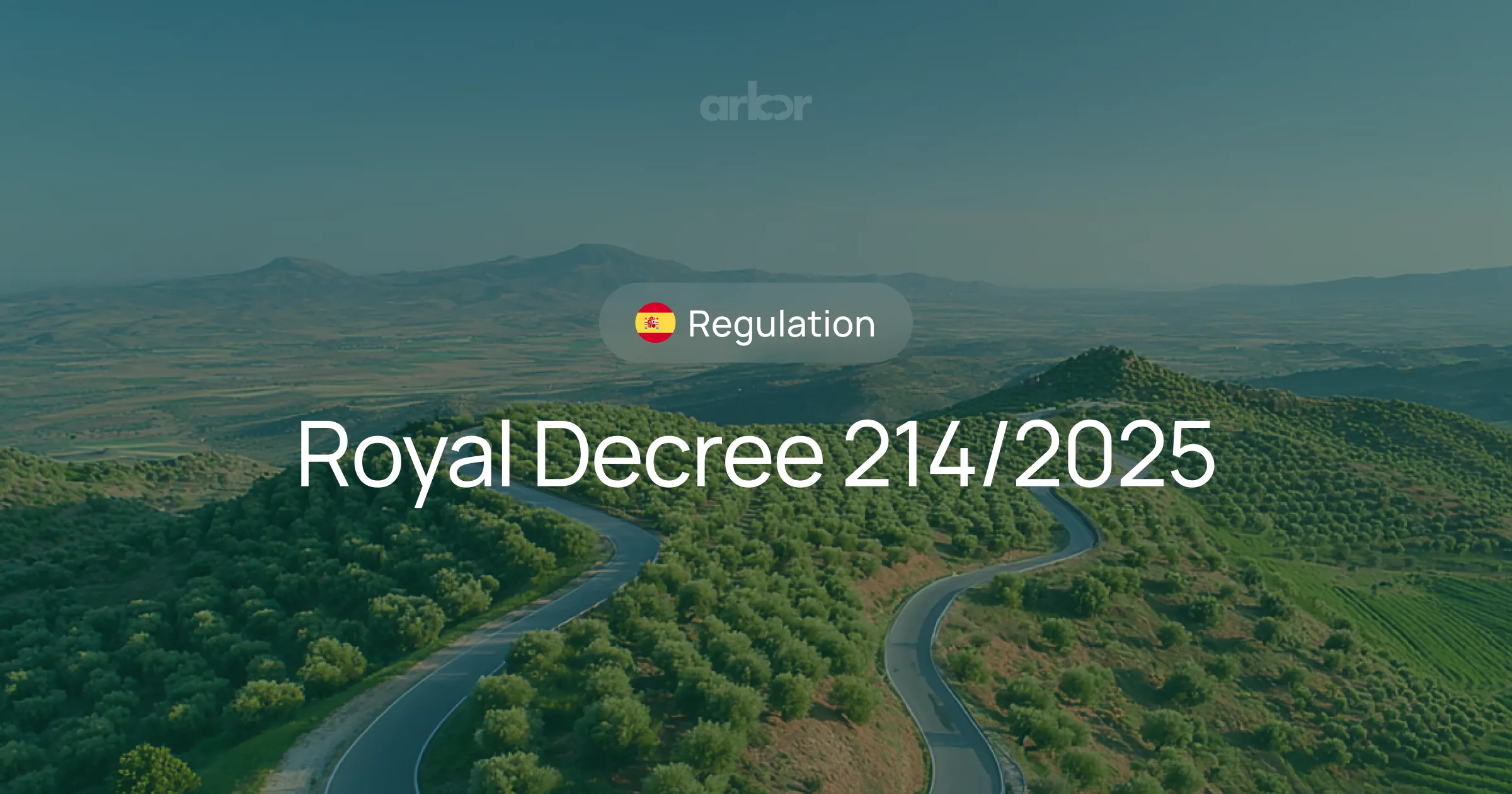
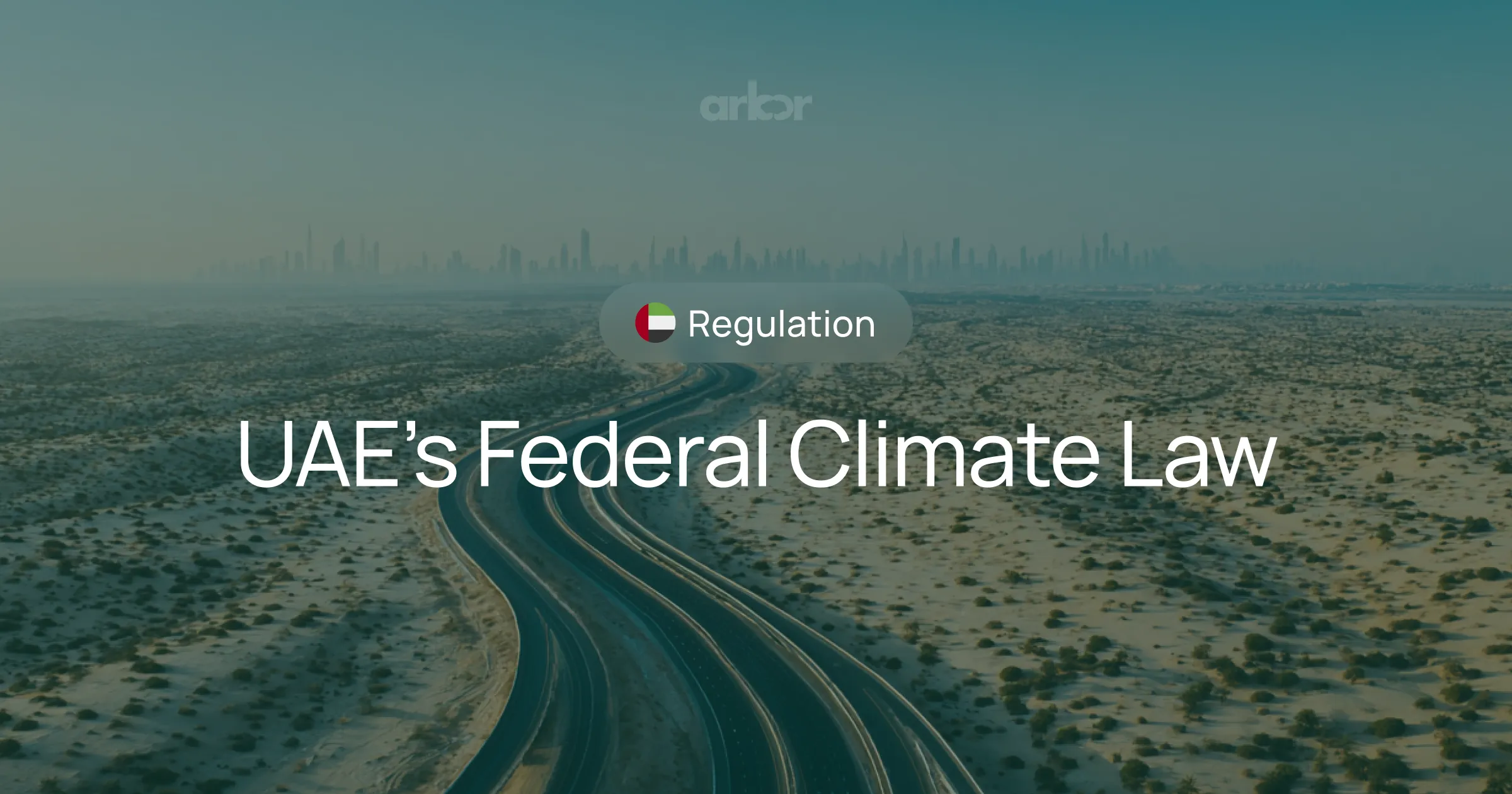









%20Arbor.avif)





%20Arbor.avif)


.avif)
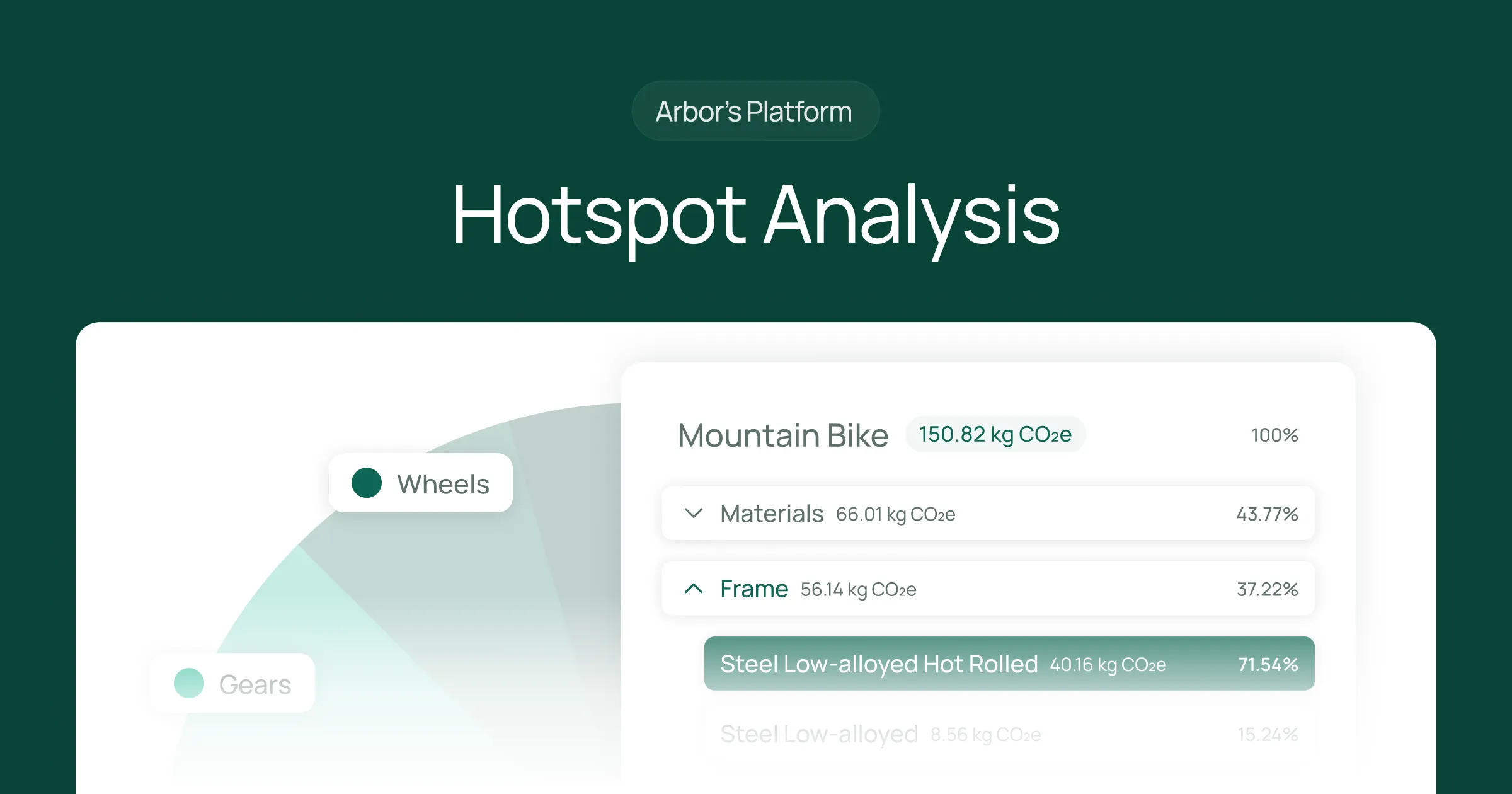


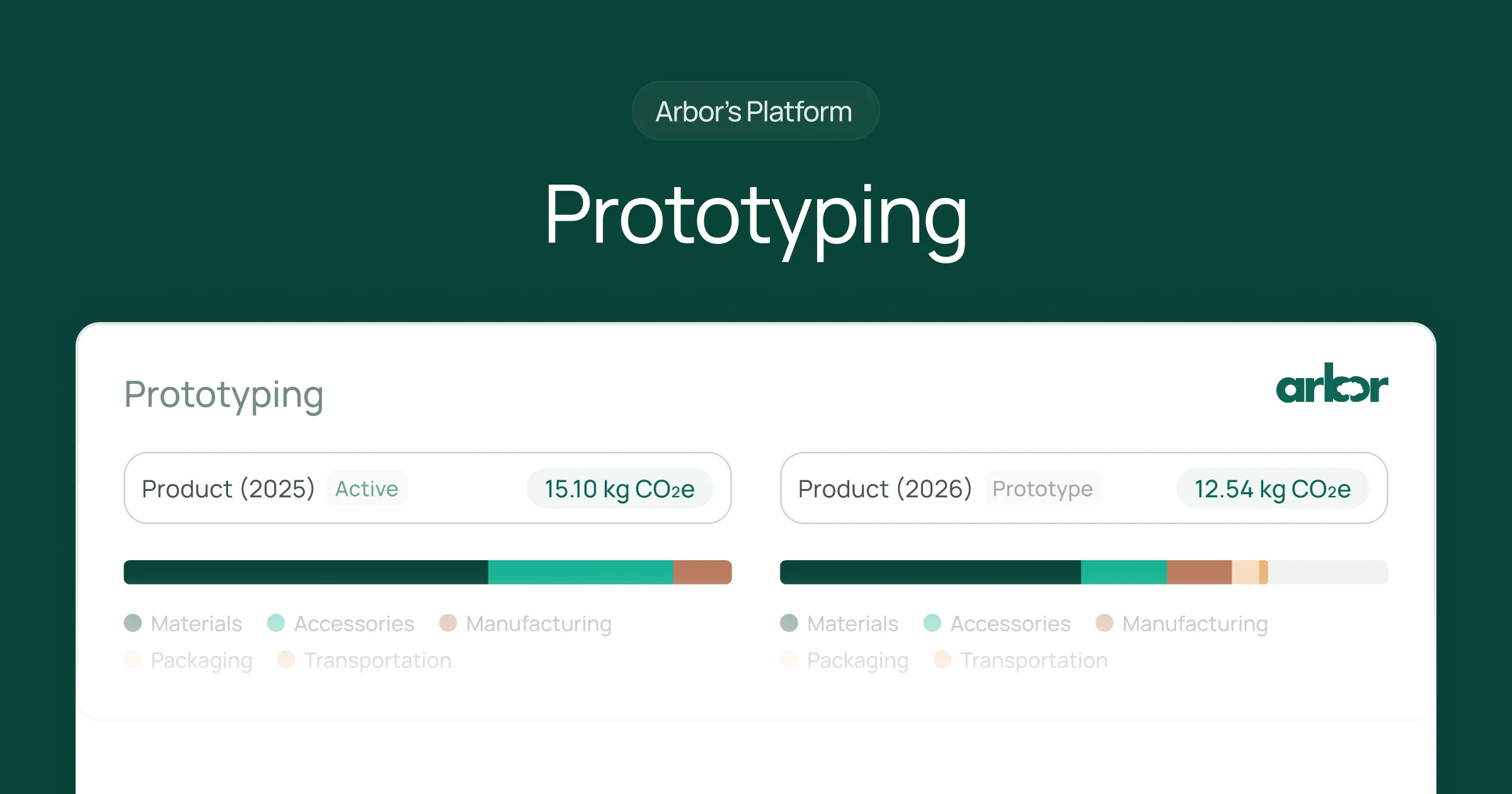


%20Arbor%20Canada.avif)

.avif)
%20Arbor.avif)
.avif)






_.avif)
.avif)
%20Arbor.avif)




%20Software%20and%20Tools.avif)





.avif)
.avif)
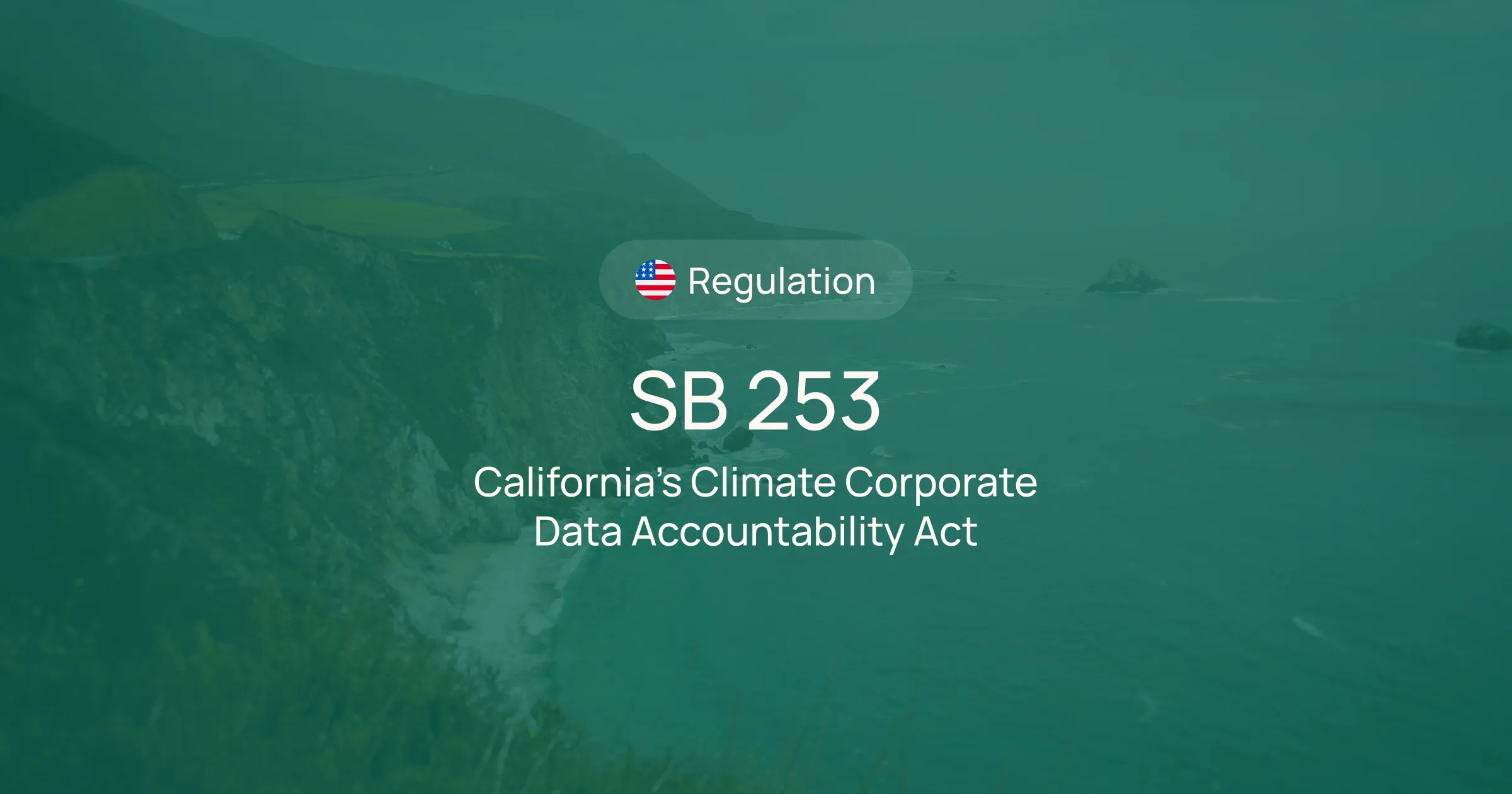



%20EU%20Regulation.avif)











.avif)


%20Arbor.avif)









_%20_%20Carbon%20101.avif)







.avif)

.avif)
.avif)









